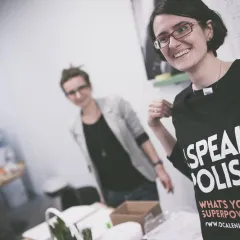Very little is known and said about Panama in Poland. For Poles, it is certainly not a very popular travel destination. Although quite unfortunate, I have met a lot of people in Poland who have no idea where Panama is or think that Panama is in Africa! The word Panama has several meanings. In indigenous language it means abundance of fish, fauna and flora. Others say that the name was given after a commonly found in the country species of trees named Panama. Panama has a very privileged geographical position as it joins North and South America as well as the Atlantic and Pacific Oceans.
Panama is a very small country of almost 3.5 million inhabitants. It is located in Central America. It has borders with Costa Rica, Colombia, and the Atlantic and Pacific Ocean. The Republic of Panama (its official name) has 190 years of history counted from the moment it gained its independence from Spain in 1821. Panama’s official language is Spanish (as it is a former Spanish colony as most countries in Latin America). English is widely spoken amongst professionals and it is the official ‘business language.’
Economy
The economy of Panama is a fully dollarized although in theory the national currency is the Balboa (1 B/. = 1 USD). Panama is a free market economy with a history of low inflation (currently approximately 5%). It is based mainly on the services industry, i.e., banking, commerce, and tourism.
Panama's economy is based primarily on a well-developed services sector that accounts for nearly 80% of its GDP. Services include the Panama Canal, banking, the Colón Free Trade Zone, insurance, container ports, and flagship registry, medical and health services. The country's industry includes, manufacturing of aircraft spare parts, cements, drinks, adhesives, textiles. In addition, leading exports for Panama are bananas, shrimp, sugar, coffee, and clothing.
Food
Because of Panama’s diverse Spanish, American, Afro-Caribbean and indigenous influences, Panamanian cuisine ranges from the familiar to the ultra-exotic. Products like coconut, corn, plantain, tropical fruits and seafood are very common and used in local traditional dishes.
From the sea…
Pargo (red snapper), corvina (sea bass), langostino (jumbo shrimp), langosta (lobster), calamari, cangrejo (crab), and pulpo (octopus). Traditional Panamanian seafood dishes come usually in four ways: fried, grilled, al ajillo (with a spicy garlic sauce), or a la española (sautéed with tomatoes and onions).
Deserts…
Pastel tres leches, or "three-milk cake," is made with just that: evaporated, condensed, and regular milk, cooked into a rich, pudding like cake. Flan is as popular as well as it is all over Latin America.
Beer and liquor
Beer is Panama's most popular alcoholic drink, and there is a wide variety of national brands -- all light pale lagers. Panama's most famous drink is seco, a sugar-cane-distilled alcohol. Also popular in Panama are rums most of them produced locally.
Population
Immigration to Panama is represented by ethnic groups in the 19th and 20th centuries: British and Irish, Dutch, French, Germans, Italians, Portuguese, Poles, Russians or Ukrainians (a large number are Jews), U.S. Americans and West Indies/Caribbean (especially Afro-Caribbean) nationalities, in which thousands of Barbadian and Jamaican workers played a role in the construction of the Panama Canal. Also important was the immigration of Arabs and Asians: in particular Chinese, Lebanese, Palestinians, South Asians (from India and Pakistan) and Syrians.
Population is mixed and made up of the following ethnical groups: mestizo and mulattoes 70%, Blacks/African descent 14%, white 10%, Amerindian 6%, and East Asian 1%.
Tourism
Panama has a lot to offer for every single taste. For beach lovers, there is a choice between Atlantic and Pacific beaches (my personal preference is for the Atlantic ones as they have white sand and crystal clear water just like in the movies...).
Because of Panama’s tropical climate, there are a lot of rainforests, so nature lovers will find a large number of activities to do such as bird watching, canopying, hiking, etc.
If you have a passion for climbing Panama’s highest mountain, Volcan Baru which is 3,474 meters high is a must for you, revealing a spectacular view of Panama’s highlands. If you like adventure, river rafting, fishing, surfing, snorkeling or diving are excellent options for you. There is an excellent and varied offer for all of these sports for all budgets.
Landmarks
Panama’s most important landmark is obviously the Panama Canal. This marvelous work of engineering was built in 1914 and it is considered one of the 7 Engineering Wonders of the World. Each year more than 14,000 ships transit the Canal. By 2014, once the Panama Canal completes its expansion which will allow it to increase its transit capacity and handle a new class of container vessel: Panamax. It the last 5-6 years the touristic and cultural offer has blossomed in Panama. In Western Europe Panama is being promoted as highly attractive touristic destination with direct flights offered from Amsterdam and Madrid. In the case of Poland I hope soon the time will come when travel agencies and tourist agents will include Panama in its touristic offer and show the beauties of this small paradise on earth...
Alma Jenkins








